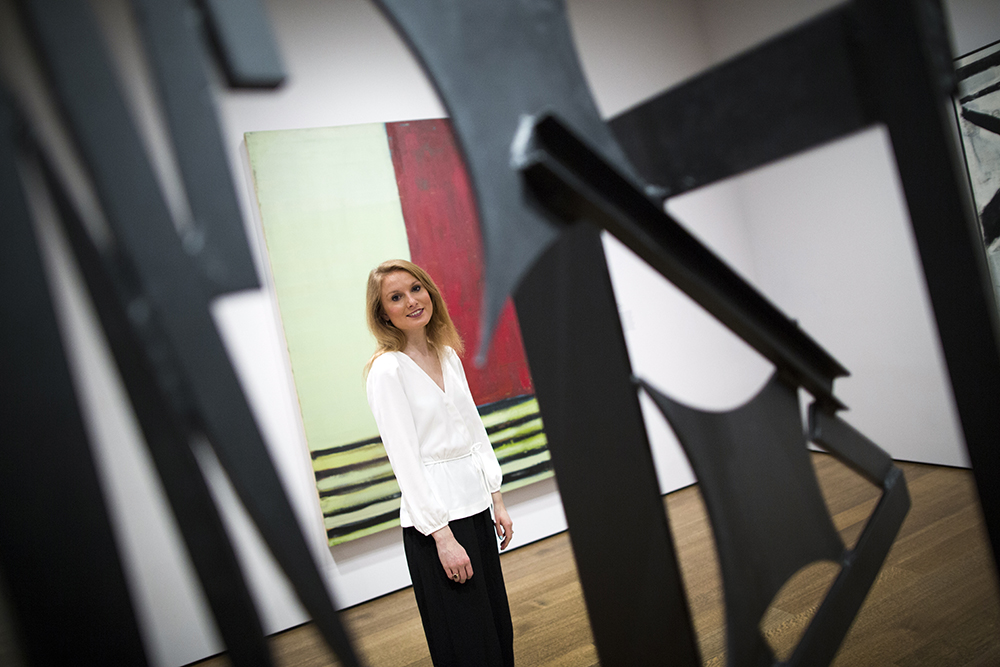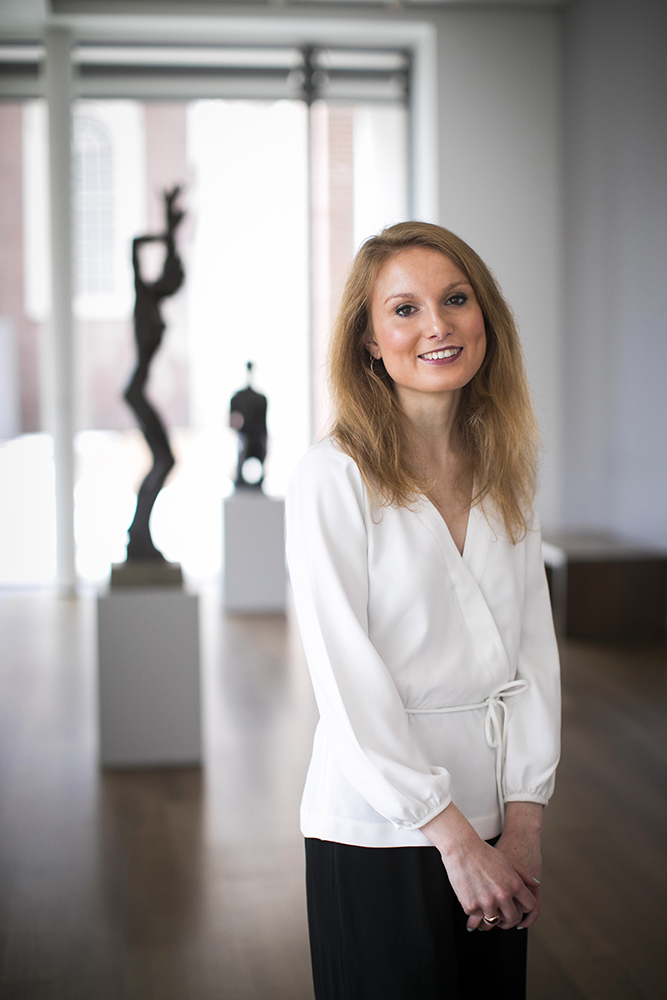Poised and articulate, Elizabeth Keto makes an impression. And she’s been doing that for two years in her role as a student guide at the Harvard Art Museums.
Her self-designed gallery tour—featuring such seemingly disparate objects as an Assyrian wall relief, a British “abolitionist” milk jug, and photographs by contemporary American artist LaToya Ruby Frazier—is intended to prompt deep reflection and even difficult conversations.
“My tour asks how art has been used to support or reinforce power, what kinds of politics can have a form in art, and the efficacy of art in producing change,” said Keto, who graduates this week with a concentration in the history of art and architecture. “It’s a tour that resonates with me, and I hope it opens up others’ experiences in the museums.”
If Keto follows her vision, this won’t be the only time she puts her interests in art and inclusivity to good use. Recipient of a 2018 Marshall Scholarship, Keto will pursue master’s degrees in art history and curatorial studies from the Courtauld Institute of Art in London. Eventually, she wants to become a curator focused on making museums more representative of diverse artists and more welcoming to visitors of all backgrounds.
“Our country is in the middle of this crucial moment around issues of inclusion and diversity,” said Keto, sitting in the museums’ courtyard on a bustling Monday morning. “I want to help museums reinforce those values, so that any visitor can see some aspect of her life represented.”
As an ambassador for the Harvard Art Museums, Keto said she’s noticed that many people aren’t fully at ease in front of art—even when they’re taking a tour with an undergraduate guide.
“People can be intimidated by the museum space, and it can be tough sometimes to get them talking,” Keto said. “But everyone has something interesting or insightful to say; people just need the confidence to speak up.”
Passion for Art
Keto found her confidence as a result of childhood museum visits and forays into drawing and painting. Growing up in Washington, D.C., she visited cultural institutions frequently.
After her first year of high school, she participated in a National Gallery of Art program designed to introduce students to careers in art and museums. “We talked to everyone from curators to the conservators who make frames,” Keto said. “At the end of it, I realized you can do this as a career.”
Some of Keto’s passion may even run in the family. Her paternal grandmother—her namesake, who died just a few months before she was born—shared a love for art; she painted, trained as an art historian, and after retirement, even delivered tours at the National Gallery. “I grew up with the sense that [art] had mattered deeply to someone in my family, and it was always something my parents were open to,” Keto said. “It’s almost like I’ve found out more about [my grandmother] through studying art history. I’ll tell my dad about something I’m studying and he’ll say, ‘I remember my mom talking about that.’”
Moments of Inspiration
Keto and her fellow seniors are the first class to have experienced the transformed Harvard Art Museums for all four years of their time on campus. (The museums reopened in November 2014 following a major renovation and expansion.) Access to art has been critical to Keto’s undergraduate experience, she said, noting that she’s been in the museums at least once a week since she stepped on campus.




